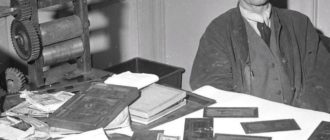
Assembling (from French assemblage – “assembling” or “assembling”) is an arts and crafts technique in which the artist creates a relief image by gluing three-dimensional parts or objects onto a flat base. In the technique of assemblage, it is also allowed to use paints for a pictorial addition to an artistic composition.
Assembling, unlike its related collage, is a kind of technique for attaching three-dimensional, rather than two-dimensional (flat) elements to the front surface of the picture. Thanks to the use of volumetric details, the image is as realistic and visually effective as possible.

Application, merits and materials of assemblage
Not only professional artists and sculptors use assemblage in their work. This technique is also in demand in the process of teaching the basics of fine arts in kindergartens and schools. It improves associative thinking, memory and attention, and helps develop creativity.
Ordinary people of all ages and professions find many other virtues in assemblage. With this technique you can:
- it is interesting to spend free time alone or in the company of loved ones;
- fill the interior of your home with beautiful handmade works of art;
- find original artistic application of utilitarian objects of everyday life.

Assembling is a democratic and multifaceted technique of fine art, which uses a variety of materials at hand:
- metal;
- plastic;
- wood;
- ceramics;
- artistic paints;
- dried plants;
- paper;
- fabrics;
- glass.
Professional artists often use household trash and junk to create their own original artwork. In the hands of the master, many scattered everyday objects turn into an artistic composition filled with deep aesthetic content.

History
The history of assemblage as an independent visual art technique recognized by specialists is about 70 years old. The term “assemblage” is coined by French artist Jean Dubuffet, who first used it in 1953 to refer to artworks created from scrap and debris.
But the earliest creative experiments in the field of art with sticking relief objects on a flat base date back to the 1910s. This approach to the creation of original paintings and installations was used by many followers of Cubism in their search for new artistic solutions. The original technique was also in demand by the followers of Dadaism, Surrealism and other currents of abstractionism.
In 1961, New York hosted the first exhibition, The Art of Assemblage, which featured works by many American and European artists in innovative techniques. Since that time, assemblage has become a full-fledged form of fine art, and the number of its supporters is rapidly increasing in all corners of our planet.
Nowadays, works created using the technique of assemblage invariably attract the attention of connoisseurs of contemporary art. They often cause fierce controversy among critics, but do not leave anyone indifferent and thus make a huge contribution to the development of world culture.

The most famous masters of assemblage
The most famous masters of assemblage include dozens of versatile artists. And yet, the following artists deserve special attention:
- Vladimir Tatlin is an iconic personality of the world avant-garde and the founder of constructivism. As early as the mid-10s of the 20th century, the Russian artist began to create his famous counter-reliefs. With their help, he tried to bring the composition out of the plane of the picture into the volumetric space.
- Joseph Cornell is a distinguished American master of assemblage who became interested in the new technique influenced by the ideas of Max Ernst. His nostalgic boxes of found objects, created in the 1920s and 1930s, brought the author worldwide fame after many years at exhibitions in the 1960s.
- Elsa von Freytag-Loringhoven is an eccentric representative of Dadaism, the first woman to use the technique of assemblage in her work. She became famous all over the world for making complex costumes from garbage found on the street and provocative poems.
- Louise Nevelson is an ardent American feminist and talented artist. She used firewood found on the street to create artistic compositions and, after years of poverty, won recognition from the public.











